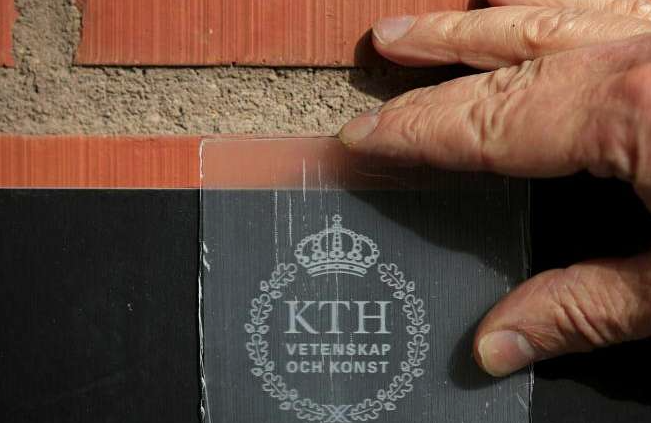
[Image above] Credit: Derek Finch; Flickr CC BY 2.0
The research doesn’t lie—solar power isn’t going anywhere. In fact, commercialized solar energy use in the U.S. spiked 33% in 2014, thanks to said soaring solar industry expansion.
In the past year, we’ve seen research about how windows-turned-solar-cells could revolutionize energy-efficient buildings; how the key to large-scale solar power storage could be rusting before our eyes; and how perovskites might be the answer to highly efficient, low-cost solar fuel cells.
So harnessing and storing solar power efficiently is paramount if the sun will ever be our go-to source for clean energy.
And when it comes to developing the latest solar energy solutions, a few materials seem to get most of the press—logical materials like perovskites, silicon, and, of course, glass.
But what if the next superstar solar cell material defies traditional logic?
Windows and solar panels of the future could be made from one of the best—and cheapest—construction materials in existence: wood.
No, this isn’t an April Fools’ Day prank. This is legit.
Researchers at Stockholm’s KTH Royal Institute of Technology have developed a new transparent wood material that can be used for large-scale solar cell production, according to a KTH news release.
Lars Berglund, professor at Wallenberg Wood Science Center at KTH, explains in the release that while optically transparent wood has been developed for microscopic samples in the study of wood anatomy, the KTH project introduces a way to scale up the material for use in solar cells.
“Transparent wood is a good material for solar cells, since it’s a low-cost, readily available, and renewable resource,” Berglund says in the release. “This becomes particularly important in covering large surfaces with solar cells.”
The optically transparent wood is a type of wood veneer in which the lignin, a component of the cell walls, is removed chemically, the release explains.

The transparent wood is made by removing lignin in the wood veneer. (Photo by Peter Larsson.) Credit: KTH Royal Institute of Technology
“When the lignin is removed, the wood becomes beautifully white. But because wood isn’t naturally transparent, we achieve that effect with some nanoscale tailoring,” Berglund says. “The white porous veneer substrate is impregnated with a transparent polymer, and the optical properties of the two are then matched.”
Berglund and his team are focusing on enhancing the transparency of the material and scaling up the manufacturing process.
“No one has previously considered the possibility of creating larger transparent structures for use as solar cells and in buildings,” Berglund says.
As far as bio-based, renewable materials go, wood is by far the most-used material in construction, Berglund explains. But it offers more than renewability. Wood has “excellent mechanical properties, including strength, toughness, low density, and low thermal conductivity,” he adds.
Because of wood’s strength, toughness, and renewability, other scientists have already made biodegradable computer chips made almost entirely out of wood.
To help reduce the environmental burden of electronic devices in landfills, a team of University of Wisconsin–Madison researchers collaborated with researchers in the Madison-based U.S. Department of Agriculture Forest Products Laboratory (FPL) to create a semiconductor chip made of a wood-like material called cellulose nanofibril (CNF)—a flexible, biodegradable material made from wood.
“Now the chips are so safe you can put them in the forest and fungus will degrade it. They become as safe as fertilizer,” says lead researcher and UW–Madison electrical and computer engineering professor Zhenqiang “Jack” Ma in a university news release.
To read more about how wood is revolutionizing the green-energy landscape, check out the research behind these innovations:
The KTH Royal Institute of Technology research, published in Biomacromolecules, is “Optically transparent wood from a nanoporous cellulosic template: Combining functional and structural performance” (DOI: 10.1021/acs.biomac.6b00145).
The UW–Madison research, published in Nature Communications, is “High-performance green flexible electronics based on biodegradable cellulose nanofibril paper” (DOI: 10.1038/ncomms8170).
What do you think: Will wood replace more traditional materials in the development of solar energy technology and electronics? Share your thoughts in the comments!
